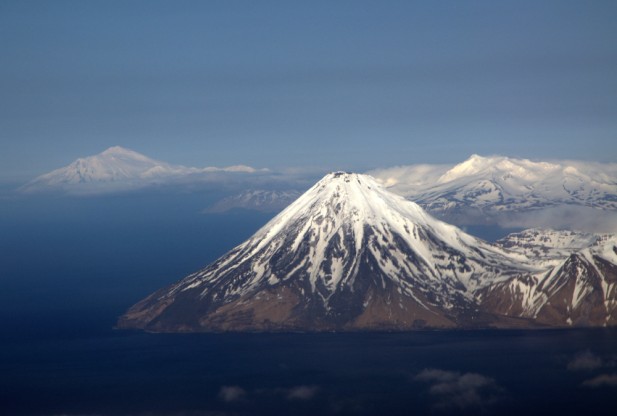
Kanaga Volcano, located near the port city of Adak, experienced a tremor Saturday morning followed by more seismic activity for about an hour, said the Alaska Volcano Observatory. This activity follows more of the same at Mount Cleveland, which threatens to make life troubling for Alaskans.
Last erupting in 1994 and 1995 Kanaga saw significant ash plumes near the community of Adak and disrupted air traffic due to continuing low-level activity and cloudy conditions, which prevented visual approaches to the local air field.
Adak is a former Navy station that has about 330 residents, a state-owned airport left over from US Navy operations, a seafood processing plant and numerous maritime-service operations.
Mount Cleveland's observatory reported a new 200-foot-diameter lava dome building near its summit according to Alaska Volcano Observatory. "There have been no observations of ash emissions or explosive activity during this current lava eruption."
Mount Cleveland has also endured intermittent seismic activity for nearly 90 years, according to the observatory, though events have become more frequent over the last 20 years. The area has become rather active over the last eight months, building lava domes and producing what volcanologists call "geothermal activity."
Lava extruding inside Mount Cleveland is thick and pasty, "like peanut butter," volcanologist Steve McNutt said. "The lava's so viscous, it doesn't flow like you're used to seeing in pictures of Hawaii, where it's fluid and runny," volcanologist Steve McNutt said. "So it piles up and makes a round, dome-like lava flow."
Lava flows out of vents inside the crater and piles up, McNutt continued. When the dome grows so big that it covers those vents, gas builds up behind it. That activity climaxed in late December of last year, when the volcano spit ash 15,000 feet into the air, threatening international travel, reports the Alaska Dispatch.
Volcanic activity around Mount Cleveland is especially difficult to measure with certainty. Unlike many other Alaska volcanoes, Cleveland has no seismometers on its flanks, so scientists cannot hear its inner rumblings. Instead, they rely on seismometers farther away, satellites that can sometimes be blocked by clouds, and lightning detectors that sense lightning in volcanic ash plumes already high in the air.
Plans are in the works to maybe put sensors on Cleveland Volcano but "that's just in the talking stage now," McNutt concluded.



Reader Comments
to our Newsletter